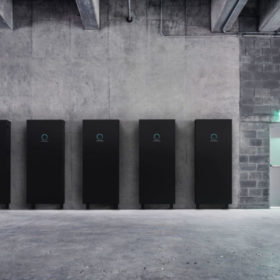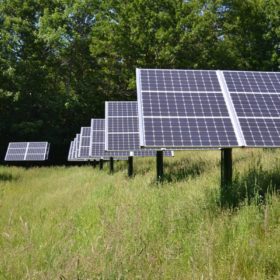Techno-economic analysis of PV-powered golf carts
Danish researchers have shown that adding 250 W solar panels to all of the buggies in a 50-cart fleet is a profitable investment. With an upfront investment of around €75,000, annual benefits of around €15,000 are possible, they claim.
Q Cells commits to three-year, €125m German R&D spend
The Korean company has committed to invest in solar innovation in Germany at a time when the EU and member states are desperately trying to kick-start the Covid-19 recovery.
Hanwha Q-Cells wins patent litigation against JinkoSolar, REC Solar and Longi in Germany
The Düsseldorf Regional Court has agreed Chinese rivals of the Korean manufacturer illegally used its patented passivation technology. The judges granted Hanwha Q-Cells an injunction which requires Jinko, REC and Longi to retrieve all modules featuring the patented technology distributed in Germany since late January last year. Hanwha can also opt to have the offending products destroyed.
New generation of solar batteries from Sonnen
The latest version of the storage system from the German manufacturer can store up to 55 kWh. Sonnen ensures a lifespan of 10,000 charging cycles.
Facade solar panels with ‘mimic design’
Dutch startup Solar Visuals and the Netherlands Organisation for Applied Scientific Research (TNO) have developed new “mimic design” facade modules that reproduce the features of building surfaces. Lenneke Slooff-Hoek, a senior scientist for TNO, told pv magazine that the panels can be made in any size or color at 13% efficiency, adding that they have a partly transparent colored layer made of small dots.
Spanish startup RatedPower, pioneer in the development of software to optimise the design of solar plants
By scanning millions of iterations, pvDesign finds the best plant configuration and automatically generates over 300 pages of detailed documentation in seconds. The Spanish firm has just landed its first Australian client.
Jinko claims US trade commission has dismissed Hanwha patent infringement claim
The Chinese manufacturer this morning said the International Trade Commission had agreed with the initial determination issued by an administrative law judge in April, that Jinko and peers Longi Solar and REC Group had not infringed its solar cell passivation technology.
Solar could hold advantage in post-pandemic global energy sector
The International Energy Agency has acknowledged dramatic falls in energy investment caused by the Covid-19 crisis but said renewables, including PV, offered an attractive proposition to investors as the dust settled, given their enticing economics and short turnaround times.
Solar parks may have better biodiversity impact than intensive monoculture farming
A research project in the Netherlands is seeking to assess the impact of large scale PV projects on soil quality and biodiversity. Principal scientist Wim Sinke, of Dutch research center TNO, says well-designed and operated and maintained solar parks could prove to have better outcomes than monoculture farming.
Solar panel recycling: Turning ticking time bombs into opportunities
Australia has certainly demonstrated its appetite for solar power. Now, with the average lifespan of a solar panel being approximately 20 years, many installations from the early 2000’s are set to reach end-of-life. Will they end up in landfill or be recycled? The cost of recycling is higher than landfill, and the value of recovered materials is smaller than the original, so there’s limited interest in recycling. But given the presence of heavy metals, such as lead and tin, if waste is managed poorly, we’re on track for another recycling crisis. A potential time bomb could present itself as an opportunity, however, if the global EV industry showed an interest in the recovered solar products.









